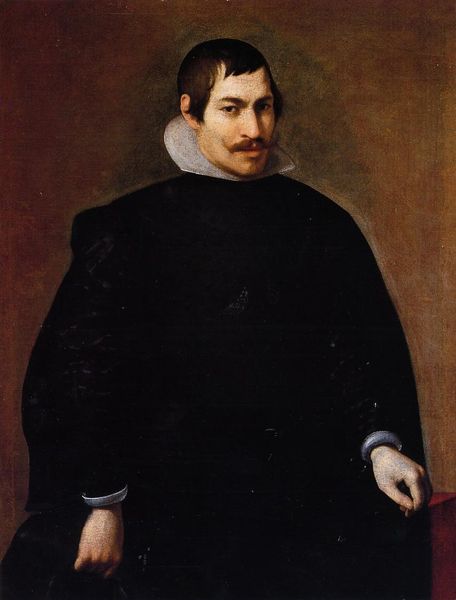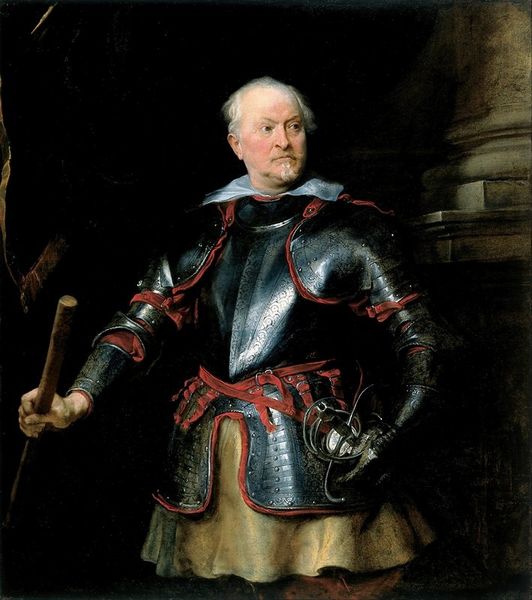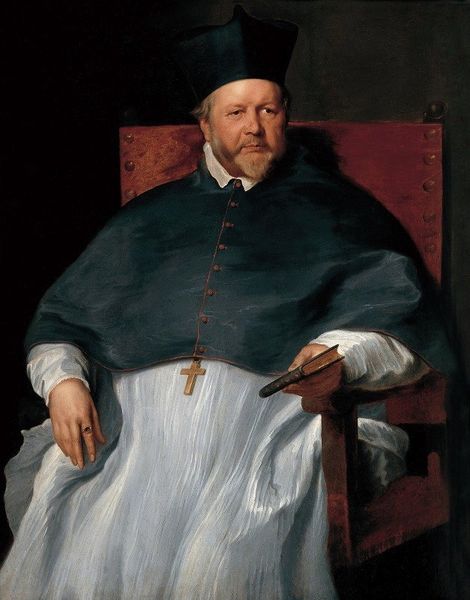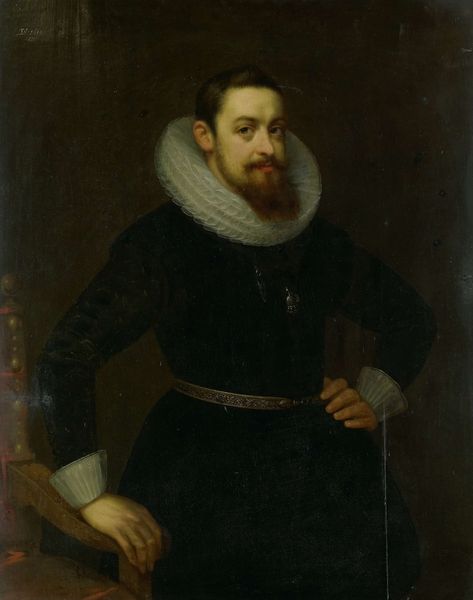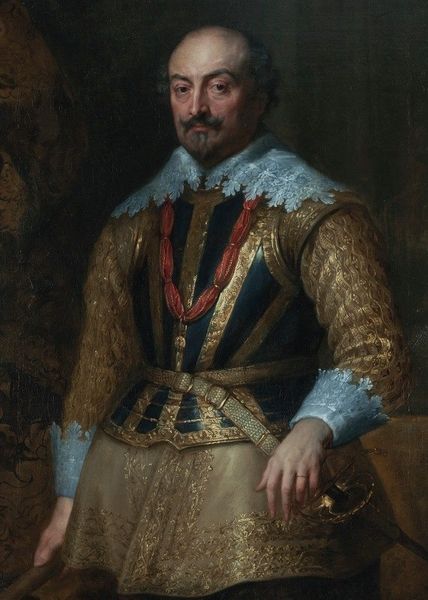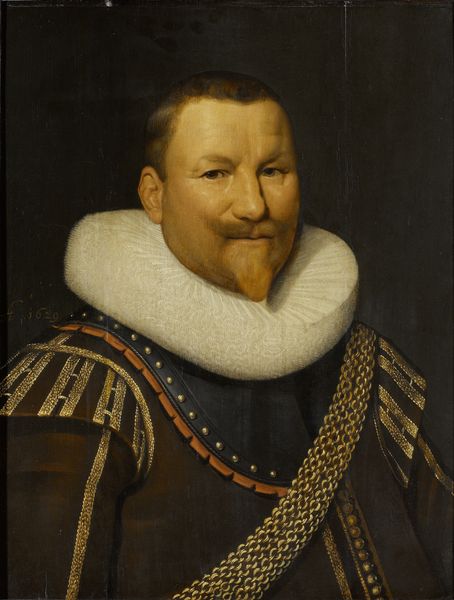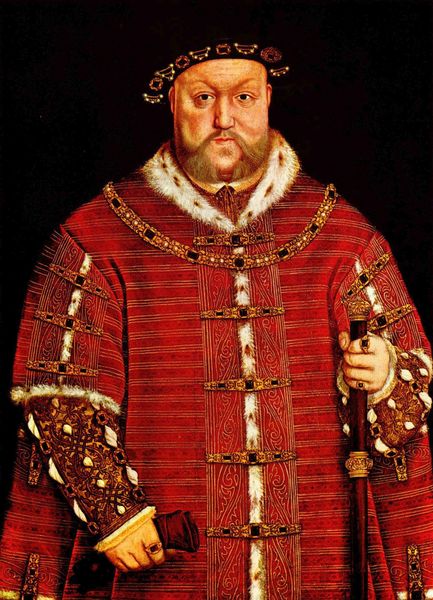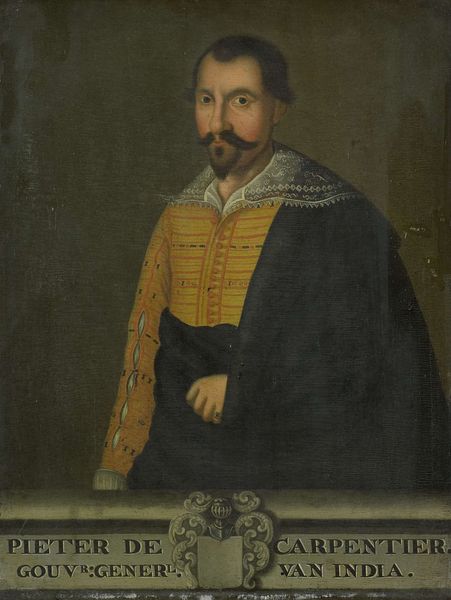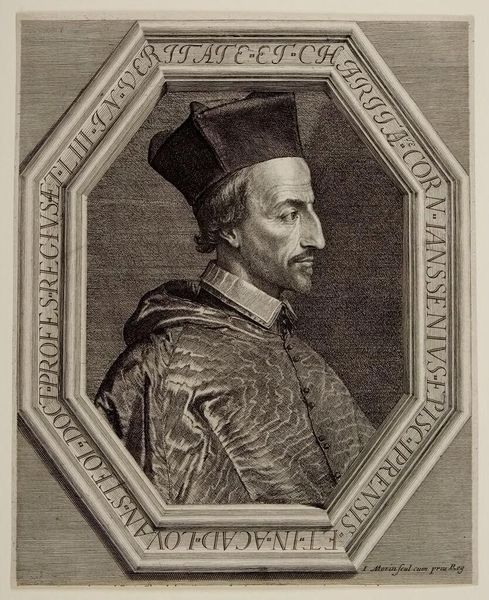
painting, oil-paint
#
portrait
#
baroque
#
portrait
#
painting
#
oil-paint
#
history-painting
Copyright: Public domain
Curator: Here we have Sassoferrato's "Portrait of Monsignor Ottaviano Prati," a stunning example of Baroque portraiture rendered in oil on canvas. Editor: That blue cloak is just breathtaking, isn’t it? The way the light catches the fabric suggests a really luxurious textile, almost tactile despite being a painting. It establishes the subject immediately as someone important. Curator: The colours carry deeper meaning. The Virgin Mary is traditionally depicted in blue, which can be associated with purity. The red is symbolic, calling to mind Christian themes like sacrifice and, combined, these colours have been linked to depictions of Jesus. Here, it’s used for someone within the Catholic church, speaking volumes. Editor: I wonder what dyes would have been used to get such intense colours? I'm immediately curious about the availability of these pigments, their expense, and how the use of specific pigments communicates prestige within the confines of material culture at the time. Curator: That intense ultramarine would almost certainly have been made from lapis lazuli, a highly prized stone mined in Afghanistan and imported to Europe, underlining your point about material prestige. Look at the crispness of the lace cuffs and collar too; those details are indicative of wealth and power within the sitter's social sphere. The portrait would serve as a powerful statement about identity and standing. Editor: There is something deeply considered and skillful about the application. Look at the textures, see how they give an illusion that each aspect is an item of meticulous quality and great worth. Did the choice of this quality reflect the way that Monsignor Ottaviano wanted to portray himself or to cement himself for his legacy? What do you think? Curator: Portraits serve various functions but this is interesting because it conveys authority but also something gentler. Note that he’s holding a document and his hand rests on a book, connoting a life dedicated to learning and perhaps theological pursuits. While it exudes opulence, it’s still a very human portrayal. The book also reinforces ideas about continuity and wisdom which serve to underscore the significance of Prati and his role in the church. Editor: I love how, from a single object—like that cloak, or the pages beneath his hand—we can unpack all these considerations around wealth, faith, identity, and history. This one artwork really holds so much! Curator: Indeed. Through a sophisticated interplay of material signifiers and iconic representation, Sassoferrato has offered us a glimpse into the social, cultural, and even theological fabric of the era.
Comments
No comments
Be the first to comment and join the conversation on the ultimate creative platform.

